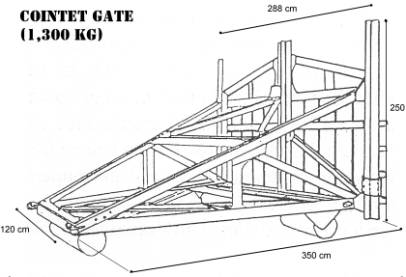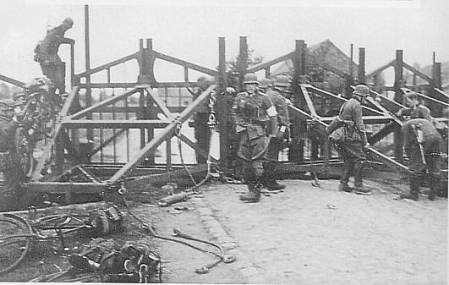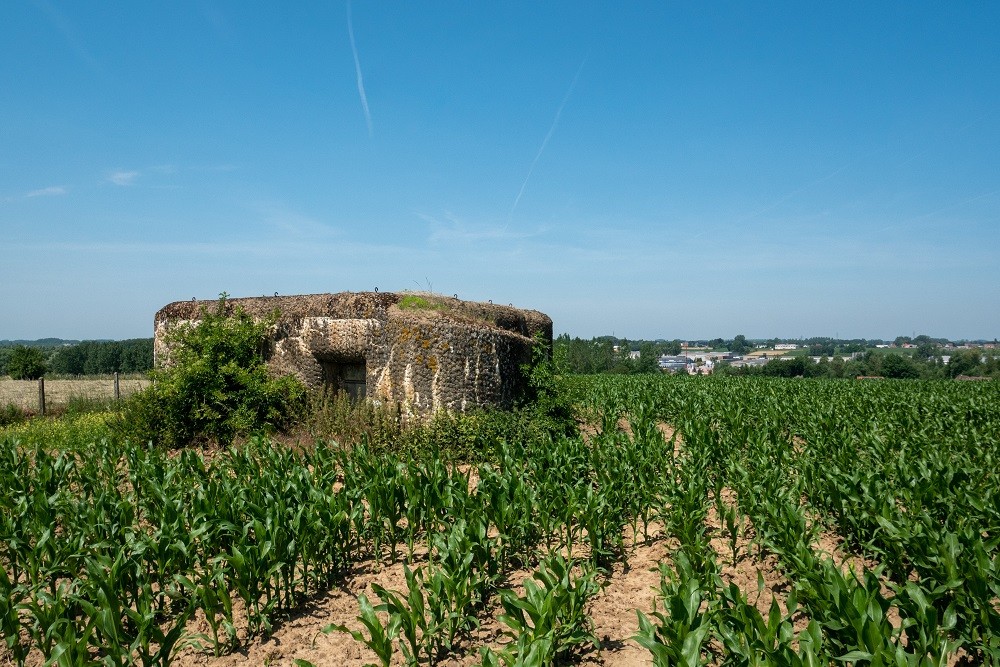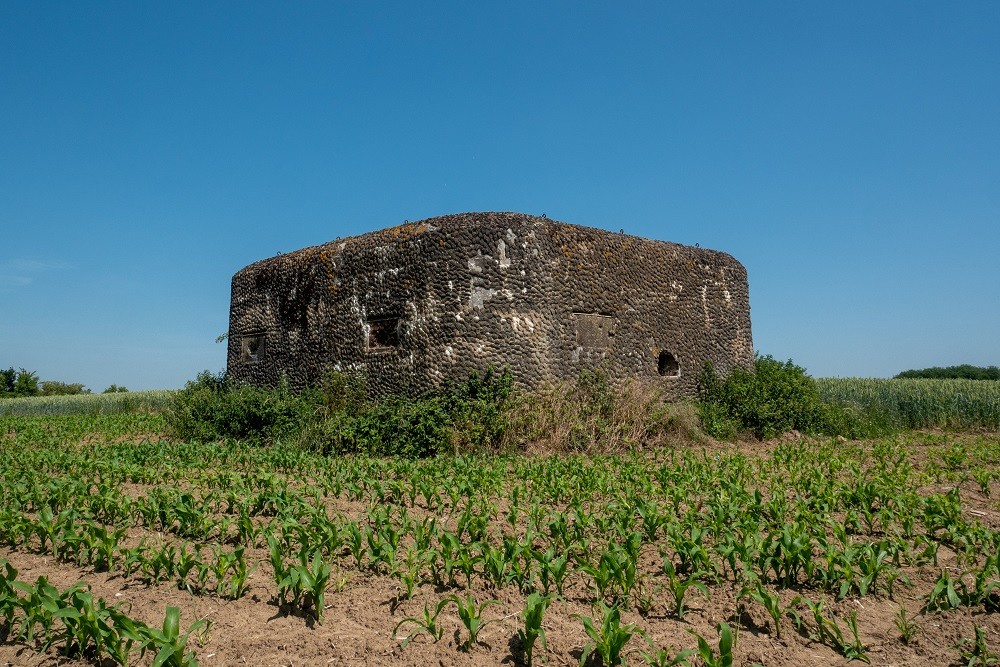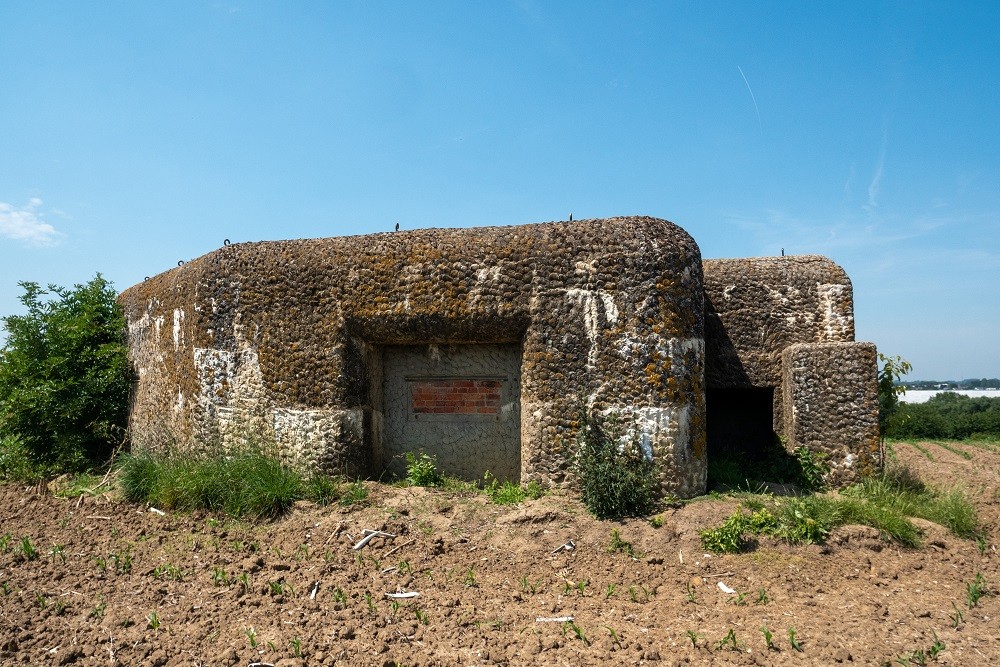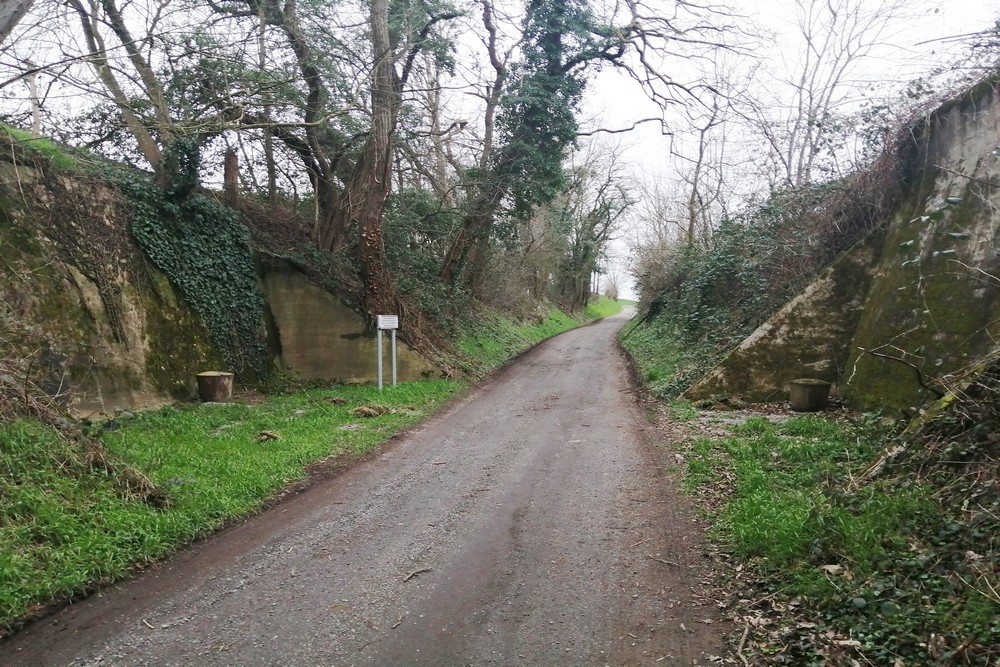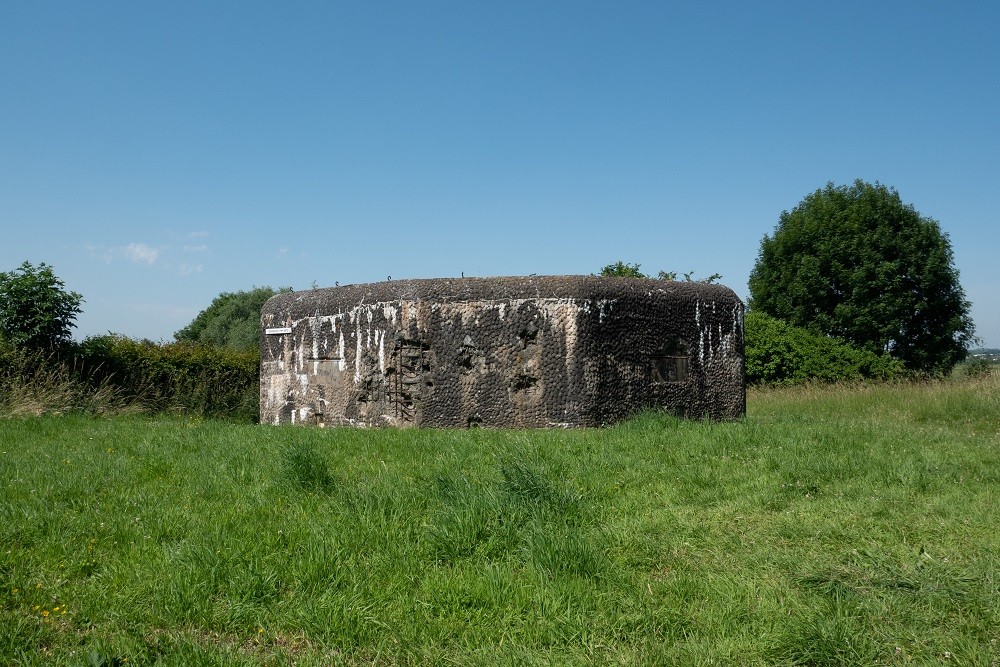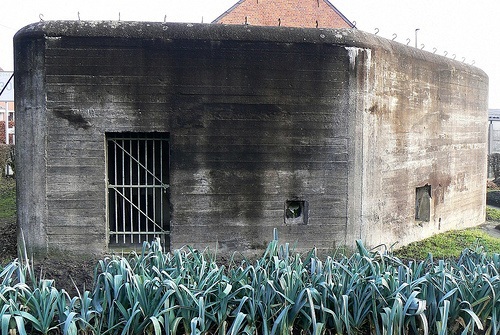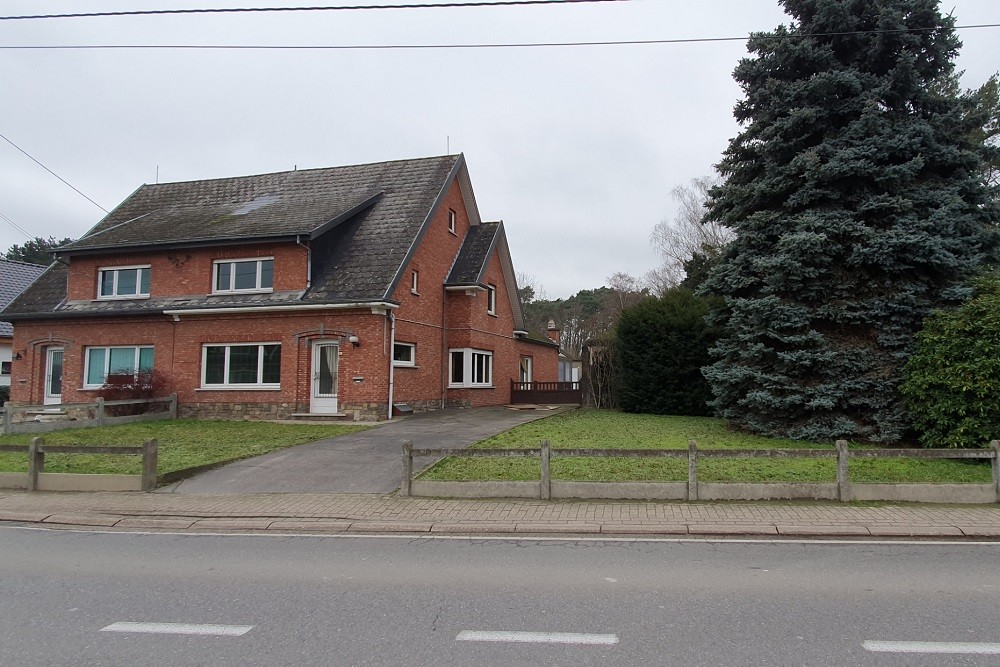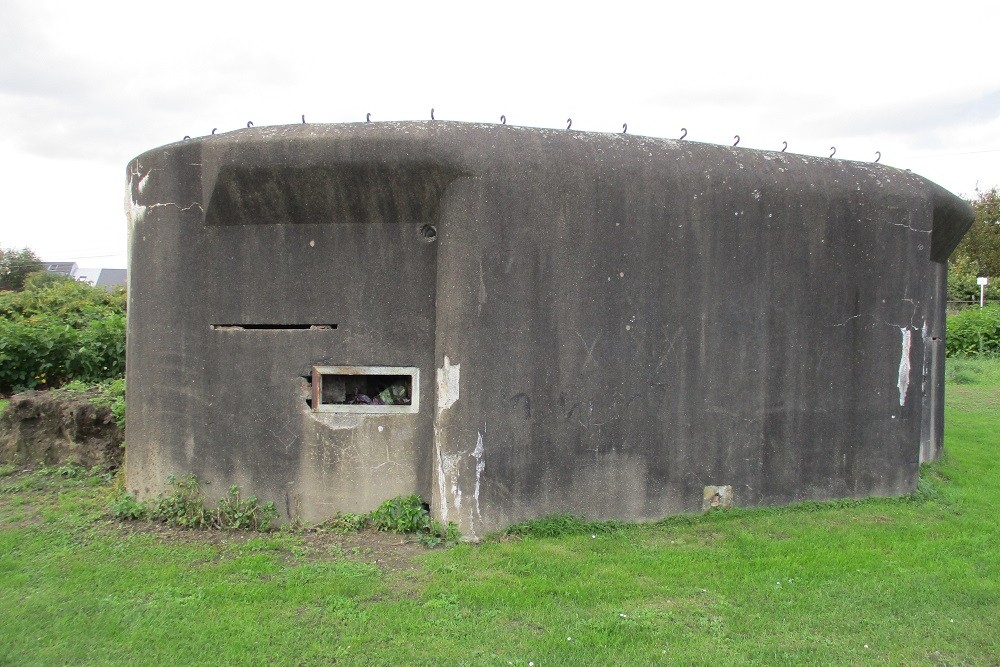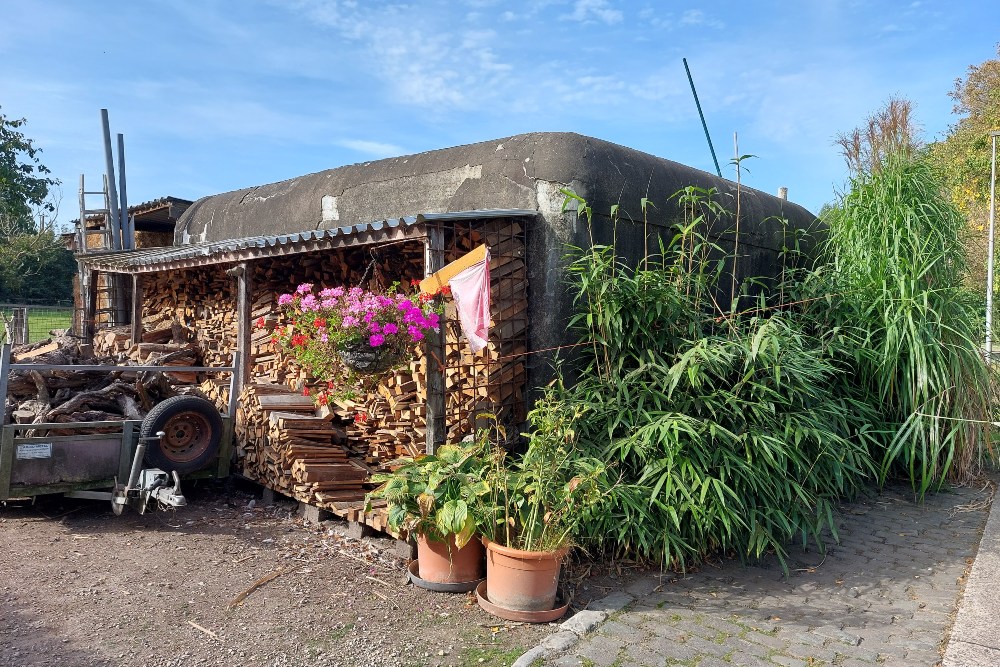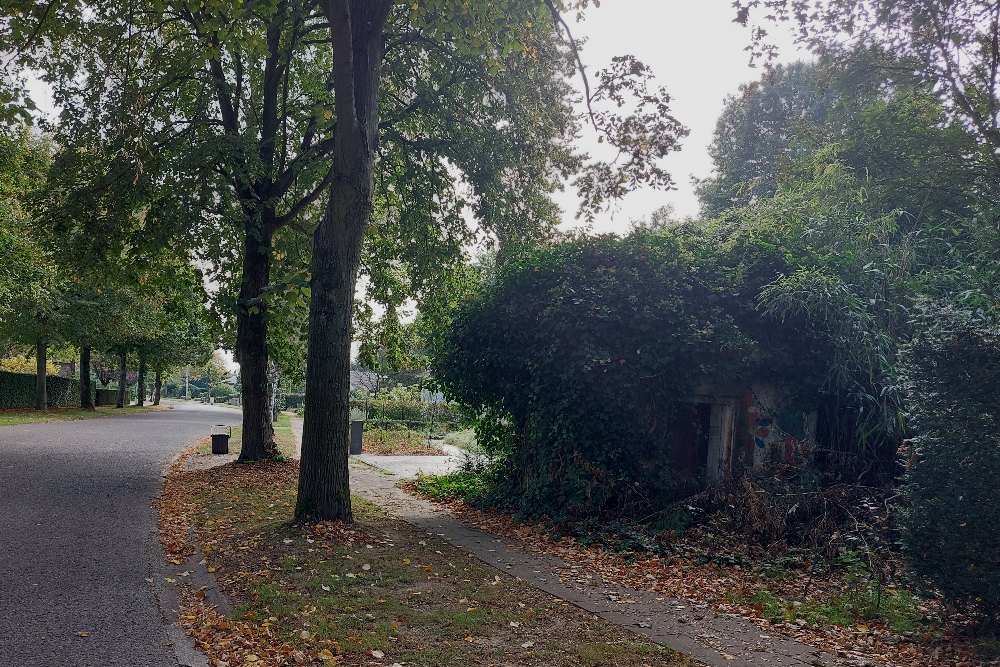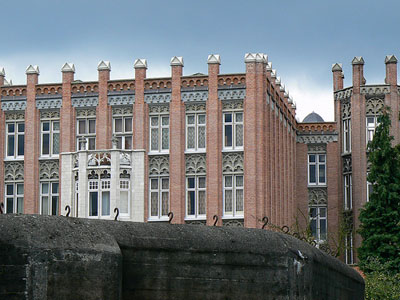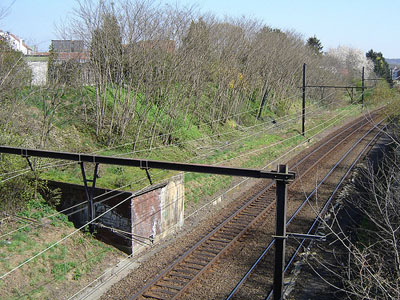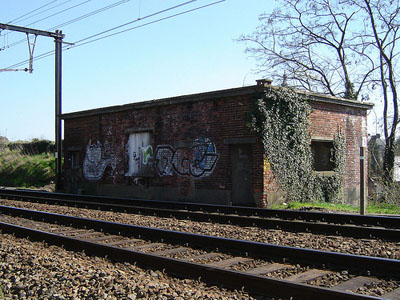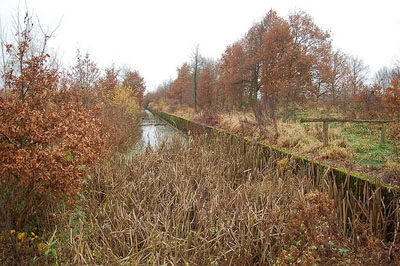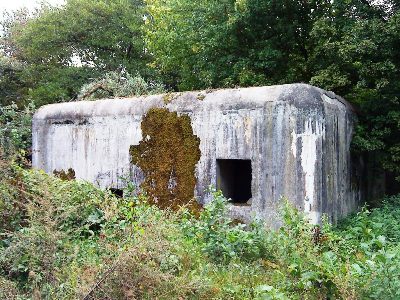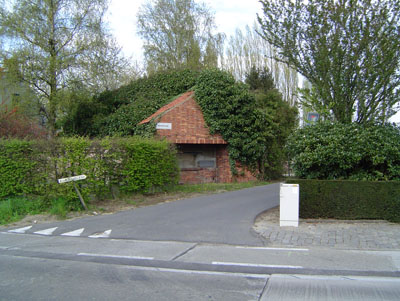Iron Wall?
Belgium strongly figured in her defenses on the protective power of the Albert Canal. When the German troops marched into Belgium on May 10, 1940, it was of great importance that the allied troops had enough time to reach the Albert Canal, so they could fight the Wehrmacht together with the Belgian troops. This soon proved vain hope. Despite many defenses, gun emplacements and -fortress Eben-Emael which was considered to be invincable, the line at the Albertkanaal was overrun in two days. The Belgian troops retreated towards the KW-Linie, the "iron wall" between Koningshooikt and Wavre.
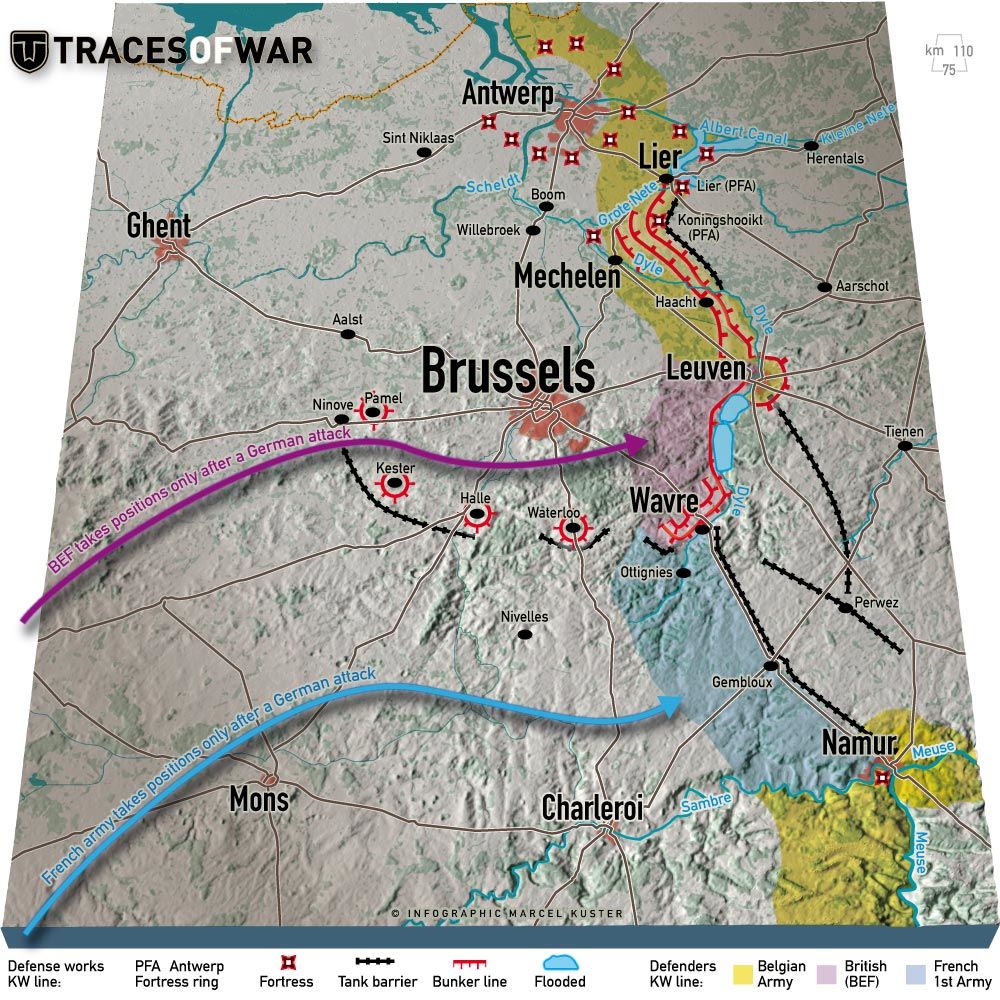
The KW-line started in Koningshooikt near Antwerp and headed towards Wavre. South from Wavre left a spur of the KW-line to Ninove. Source: Marcel Kuster, TracesOfWar
History
When the threat of war was increasing in the thirties, the idea was formed to build some extra defense lines behind the Albert Canal. This line was between Antwerp and Wavre, especially between Koningshooikt and Wavre: the so-called KW-linie. Initially, the teams of conscripts who were engaged in the construction were later replaced by outsourced civilian firms.
View
The KW-line was a bunker line. This meant that the main barriers were permanent: bunkers, anti-tank obstacles. In addition, the groundforces made more trenches and barbed wire obstacles.
As mentioned, the KW-linie began in the fort Koningshooikt. Between this fortress, decorated as an infantry base, and the Dyle, the board consisted mainly of Cointet elements, a well known anti-tank obstacle. The Grote and Kleine Nete on the north were a difficult obstacle. The defense was strengthened with two bunker lines and the deeper bridghehead Mechelen.
Once the line reached the Dyle, they continued to follow the river from Leuven to Wavre. This was further enforced with bunkers (a total of 235 each), Cointet elements, rail surfaces and obstacles, so called Belgian gates.
In February 1940, the line was built further on towards Namur. From Wavre left a spur of the KW-line to Waterloo, Halle, Kester into Ninove. This defense line (including 38 small bunkers) was facing towards the south (France) and was part of the neutrality politics of King Leopold III. He wanted to avoid that Germany would take offense to the KW-line, that was clearly built against the Germans.
The obstacles
The bunkers were most of the time armed with two machine guns. The standard machine gun was the 26kg heavy Maxim. Eight men guarded the bunker: a section chief, two sergeants, two ammunition loaders and two marksmen. The rest of the platoon was in the surrounding trenches or fortifications. The bunkers themselves consisted of reinforced concrete with walls up to 1.3 meters thick. They were resistant to impact from 150mm howitzers. The entrance of the bunker was made through a locksystem, the door was a grill with a steel plate behind it. The camouflage was adapted to the environment. Some were painted in camouflage colors or overwrought with camouflage nets. Others had doors and windows painted on them. Sometimes, there was build a stable or house built around it.
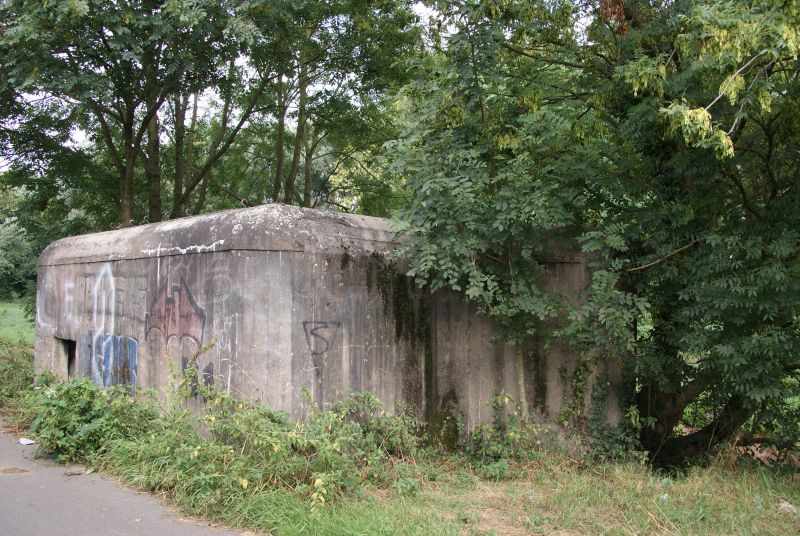
Bunker TPM 15 of the KW-Line. It is located at the Grote Nieuwedijkstraat in Sint-Katelijne-Waver, next to the cycle path along the Vrouwvliet. Source: Bram Dermout
The tetrahedra or Belgian gates were metal three faced pyramids. There were two types. The light one weighed about 190kg, while a heavy type, which was filled with concrete weighed about 470kg.
Cointet elements were steel fences. This Belgian gates, as they were called, gave the KW-line its nickname "the Iron Wall". Invented in 1933 by French General Edmond de Cointet de Fillain they were often used in Belgium. The elements had approximately the following dimensions: 3.28 m long x 3.00 m wide x 2.50 m high, counting together for about 1400kg. The various separate elements could be linked to eachother, and were placed in a zigzag shape. This created a massive barrage that was resistant to armored vehicles up to 20 tons. By adding concrete rollers underneath the Cointet elements became quite mobile and could be used to close tan opening in the he anti-tank obstacle temporarily.
Finally there were the rail fields, which consisted of five rows of railroads approximately who were putted every meter to two meters deep into the surface. The projections (maximum one meter high) were connected with barbed wire to prevent the passage to the infantry. At the road junction in Haacht, these reinforcements were complemented by an anti-tank ditch and wall.
Definitielijst
- neutrality
- Impartiality, absence of decided views, the state of not supporting or helping either side in a conflict.
- Wehrmacht
- German armed military forces, divided in ground forces, air force and navy.
Information
- Article by:
- Gerd Van der Auwera
- Translated by:
- Bram Dermout
- Published on:
- 19-01-2025
- Feedback?
- Send it!
